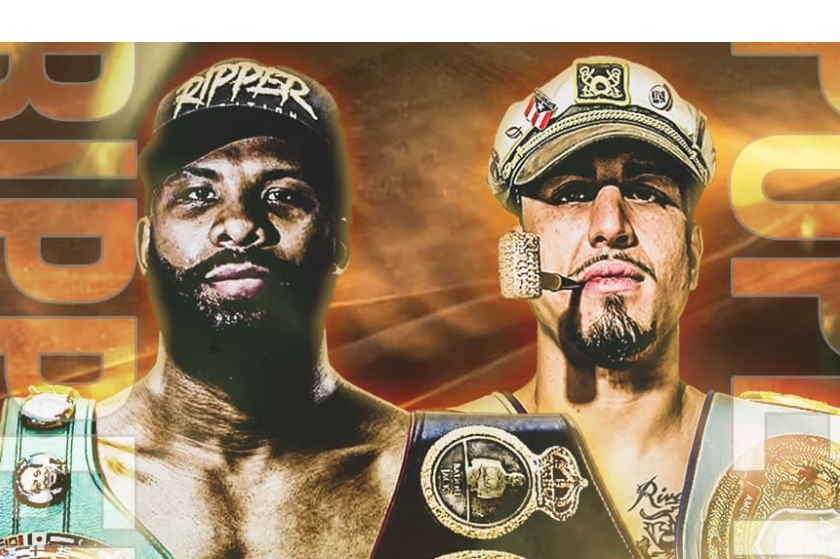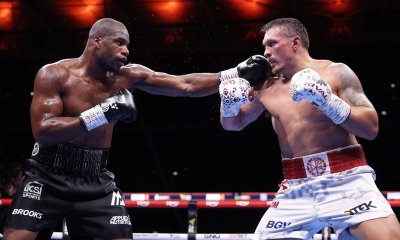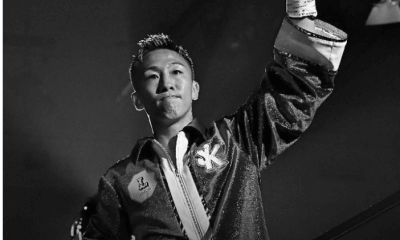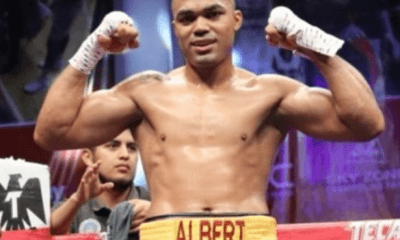Featured Articles
New England’s ‘Popeye’ Rivera Earns Respect in Controversial Loss to Badou Jack

Last year around this time, then undefeated Hartford, Connecticut cruiserweight Richard “Popeye the Sailor Man” Rivera was still boxing in 8-rounders, fighting in Worcester, Massachusetts on club show undercards—and dreaming of an improbable victory against former world champion Badou “The Ripper” Jack.
“It’s only up from there if I beat Jack,” Rivera told me after walking through another Mexican cab driver. “That’s a huge look against a quality opponent,” Rivera said of the 38-year-old former light-heavyweight and super-middleweight champion he hoped to fight. “Jack is somebody who when you beat him, they respect you.”
The only men to have done it before Rivera tried were Derek Edwards, Jean Pascal and Marcus Browne. For his efforts, Edwards got a fight against Andre Dirrell. Browne got Pascal after beating Jack and Pascal handed Jack his last loss in 2019.
Against all odds, the Jack fight not only materialized for Rivera but he took his pipe-wielding gimmick all the way around the world and might have gotten some of the respect he was looking for. “He’s scrappin. He’s making it work,” said Chris Algieri at ringside for DAZN during the action. “He exceeded my expectations.”
What Algieri saw in Rivera was what we saw in Algieri: a brave and scrappy boxer.
Unfortunately, Rivera didn’t get the decision he thought he had earned after 10 close rounds with the now 27-3-3 Jack. The three judges saw it 96-94 for Jack on two cards and 96-94 for Rivera on the third. Chris Mannix had it a 95-95 draw.
Rivera is now 21-1 but his future as a marketable prizefighter is still very bright.
As the scorecards indicated, the bout was super close and could have gone either way despite the fact that nobody expected Rivera to even compete, much less win.
Referee Frank Garza let the fighters fight and it was a good little scrap. The crowd in Jeddah, Saudi Arabia liked it and they applauded in approval when it was over.
As for the fight, Rivera was quite effective punching and moving in the first round. Rivera holds his left low but he is busy with it as a jab. In the second, third and fourth rounds, both fighters started landing heavy blows. In the fifth, Rivera really went to work as Jack suddenly stopped punching. Jack landed a big shot in the sixth and Popeye needed his spinach. Was he hurt? If he was, he fought through it.
In the seventh, Rivera started showing a small mouse under his left eye. Jack was surging in his attack but Rivera was still connecting in reply. Rivera’s most effective weapon was his ripping uppercuts on the inside. He landed them all night.
In a costly eighth round for Rivera, Jack’s right eye began to show the effects of Rivera’s right hands and he was winning the round until the timekeeper failed to ring the bell to end the round after three minutes. For 58 full seconds, Rivera, who’d never been past eight rounds ever, took hard hooks he should not have had to take.
In the ninth, Rivera took another left hook in the corner that buzzed him. Still, there was no quit in Rivera and he never stopped trying to win the fight. In the final round, Jack’s right eye looked much worse than Rivera’s left. Rivera had a small mouse at the final bell. Jack’s eye was nearly closed. The winner looked like the loser.
And vice versa.
“I definitely did enough to win,” said Rivera after the close loss. “The odds were against me. I came into his turf, under his stipulations and I still did my thing. I’m not discouraged. This won’t be the last of me. I will become a world champion.”
Will there be a rematch with Jack?
“I would love a rematch,” said the dejected yet upbeat “Popeye” Rivera. “But I doubt somebody like him will take it, especially on my turf. I was outboxing him ninety percent of the boxing fight. I know Jack doesn’t feel good about this victory.”
Boxing Writer Jeffrey Freeman grew up in the City of Champions, Brockton, Massachusetts from 1973 to 1987, during the Marvelous career of Marvin Hagler. JFree then lived in Lowell, Mass during the best years of Irish Micky Ward’s illustrious career. A former member of the Boxing Writers Association of America and a Bernie Award Winner in the Category of Feature Story Under 1500 Words, Freeman Covers Boxing for the Sweet Science in New England.
To comment on this story in the Fight Forum CLICK HERE
-

 Featured Articles3 weeks ago
Featured Articles3 weeks agoThe Hauser Report: Zayas-Garcia, Pacquiao, Usyk, and the NYSAC
-

 Featured Articles2 weeks ago
Featured Articles2 weeks agoOscar Duarte and Regis Prograis Prevail on an Action-Packed Fight Card in Chicago
-

 Featured Articles1 week ago
Featured Articles1 week agoThe Hauser Report: Cinematic and Literary Notes
-

 Book Review5 days ago
Book Review5 days agoMark Kriegel’s New Book About Mike Tyson is a Must-Read
-

 Featured Articles4 weeks ago
Featured Articles4 weeks agoManny Pacquiao and Mario Barrios Fight to a Draw; Fundora stops Tim Tszyu
-

 Featured Articles4 weeks ago
Featured Articles4 weeks agoArne’s Almanac: Pacquiao-Barrios Redux
-

 Featured Articles3 weeks ago
Featured Articles3 weeks agoRemembering Dwight Muhammad Qawi (1953-2025) and his Triumphant Return to Prison
-

 Featured Articles4 weeks ago
Featured Articles4 weeks agoOleksandr Usyk Continues to Amaze; KOs Daniel Dubois in 5 One-Sided Rounds


















